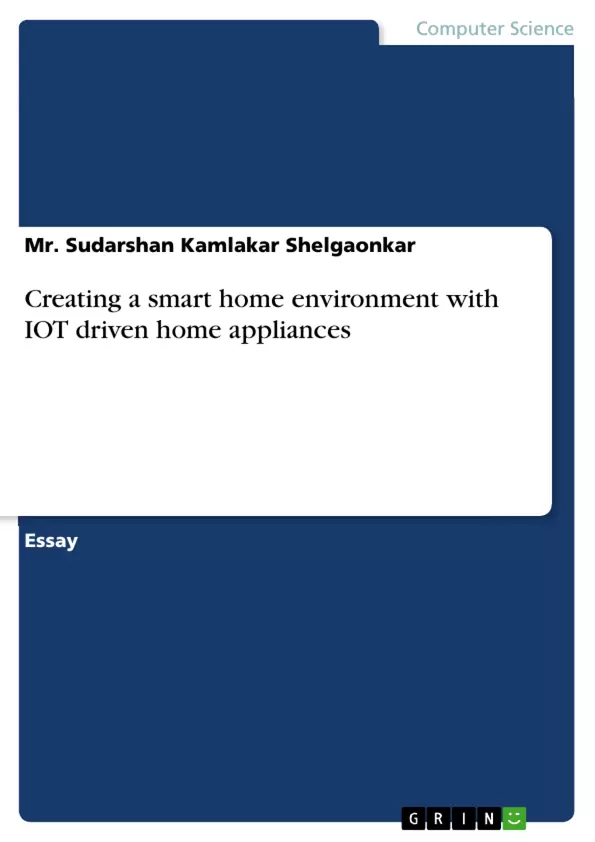This paper aims at presenting the Smart Home concept. This paper describes in detail - a) The Smart Home concept b) Our concepts to model the Smart Home using smart devices c) Adaptive decision making using artificial intelligence and big data d) Large scale implementation of this concept to model a Smart Locality, Smart City up to the level of Smart country.
Contrary to the other projects, this work is directed towards a sensors approach and an ontology modelling of the Smart Home. This work has the originality to take into account the real heterogeneity of information present in a habitat. This paper is a good overview to present what is a Smart Home and which are the necessary hardware and software components to make a Smart Home. Smart Home concept has been implemented using smart devices, adaptive decision making using artificial intelligence and big data. The work is directed towards a sensor approach and ontology modelling. This work focuses towards large scale implementation for smart systems.
Inhaltsverzeichnis (Table of Contents)
- I. INTRODUCTION
- II. DESIGN AND DESCRIPTION OF SMART HOME SYSTEM WITH INTELLIGENT DECISION MAKING AGENT
- OUTDOOR ENVIRONMENT
- INDOOR ENVIRONMENT
- Adaptive decision making using artificial intelligence and big data:
Zielsetzung und Themenschwerpunkte (Objectives and Key Themes)
This paper presents the concept of Smart Homes, focusing on how to model this concept using smart devices, adaptive decision-making, and large-scale implementation. The paper emphasizes a sensor approach and ontology modeling, aiming to provide a comprehensive overview of Smart Homes and their necessary hardware and software components.
- Smart Home Concept and Modeling
- Adaptive Decision Making with AI and Big Data
- Large-Scale Implementation of Smart Systems
- Sensors Approach and Ontology Modeling
- Smart Devices and Their Role in Smart Homes
Zusammenfassung der Kapitel (Chapter Summaries)
The introduction provides an overview of Smart Homes and their evolution driven by advancements in Internet technologies and Wireless Sensor Networks (WSN). It highlights the importance of smart devices and intelligent home automation systems in creating a connected and responsive living environment. The paper then delves into the design and description of a Smart Home system with an intelligent decision-making agent. It outlines the key components of a Smart Home, including smart objects, home network, residential gateway, and user interfaces. The paper presents two use cases, one focused on the indoor environment and the other on the outdoor environment, showcasing how smart devices can be integrated to perform sensing, monitoring, and controlling functions. Finally, the paper explores the concept of adaptive decision-making using AI and big data, illustrating how a history database can be used to learn user preferences and automate decisions based on past interactions.
Schlüsselwörter (Keywords)
The paper focuses on the Internet of Things (IoT), smart devices, intelligent home automation systems, sensors, ontology modeling, and adaptive decision-making using artificial intelligence and big data. It also explores the implementation of Smart Homes at various scales, ranging from Smart Localities to Smart Cities and Smart Countries.
- Quote paper
- Mr. Sudarshan Kamlakar Shelgaonkar (Author), 2016, Creating a smart home environment with IOT driven home appliances, Munich, GRIN Verlag, https://www.hausarbeiten.de/document/334841


